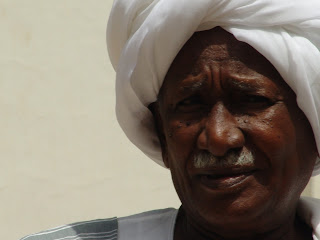On 9 July South Sudan was announced an independent republic in a joyous ceremony in Juba, and thereby the modern Sudan of colonial Anglo-Egyptian descent ceased to exist as one country, its territory divided between two states, the Republic of the Sudan and the Republic of South Sudan. The 2005 Comprehensive Peace Agreement (CPA) that made this partition possible was probably Sudan’s best opportunity to question its colonial making and reconfigure itself anew. Short of that the political capacity of the National Congress Party (NCP) and the Sudan People’s Liberation Army/Movement (SPLA/M), the two signatories of the CPA, faltered at the now sacred 1956 border between the North and the South, 1 January 1956 being the date of Sudan’s independence from its colonial engineers, Britain and secondarily Egypt. Among the more daunting tasks of the post-partition Sudans will be the actual demarcation of this mythical border dotted on maps by a series of British commissioners but never actually ‘grounded’. Mythical as it is the 1956 border evolved to become the Sudans’ most pernicious political instrument.
Apart from this border South Sudan and Sudan share common predicaments that have defined their history as one state, precarious and violent as it has been, and are very likely to imprint on their future evolution as two separate entities.
The politics of Sudan the post-colony have largely been defined by the politics of its army, the Sudan Armed Forces (SAF). Less than three years after the declaration of Sudan’s independence the SAF staged its first coup, the November 1958 takeover by General Abboud and his fellow officers. From then on the army’s incursions into political life, regularly in cohabitation with this political organisation or the other, became the permanent exception so to speak. In essence, Sudan’s one ruling party is its army. As things stand, the SPLA in South Sudan and its political machine, the SPLM, is unlikely to surrender to alternative civilian designs, or to put it clearly, even allow their mere mature emergence in a territory it considers its own by right of liberation. No wonder all challenges to the hegemony of the SPLA/M are military in nature, and the government of the new republic is already in a state of undeclared civil war with a plethora of armed movements who all argue with the language of ‘marginalisation’.
In the Sudan of old marginalisation featured as the catch all term with which many a contender of the central government phrased the much more complex relationships between the locus of power in Khartoum and Sudan’s rural hinterlands. The partition of Sudan is in a sense a consequence of these asymmetric relationships. Symptoms of the same urban-rural divide are already perceptible in the new republic of South Sudan. Like Khartoum, Juba to the majority of South Sudanese is but “where the president sleeps and the aeroplane takes off”, a centre that sucks off the wealth of the country and siphons its resources to the benefit of a minority. How this minority is perceived and identified is a matter of political contingency if not convenience, in the old Sudan habitually described in racial terms as the riverine Arabs; and in South Sudan collapsed into a tribal denomination, the Dinka.
To sustain its dominance Sudan’s ruling elite invested ideologically into a combination of political Islam and chauvinist rhetoric fused with the promise of modernisation. In the (North) Sudan of today the separation between state and religion could without exaggeration be described as politically unthinkable. It must be stated though that the lure of religious politics is organic to Sudan’s statehood and not a pathological feature introduced into the body politic by the Islamic Movement as such. Ismail al-Azhari, Sudan’s first prime minister and the man who raised the independence flag in 1956, was mesmerized by the lure of religious politics and toyed rhetorically with the rule of shari’a in the context of his presidential aspirations as early back as 1968. The May 1969 coup put an end to al-Azhari’s drive for religiously justified power in juxtaposition to the authority of the sectarian leaders. The office of the president however could not do without it. President Nimayri announced himself Imam and President Bashir rules as one. In South Sudan symbiosis between the church and the state is likely to prove challenging in its own terms. President Kiir, for all obvious purposes, does not shy away from the pulpit as a political platform.




No comments:
Post a Comment